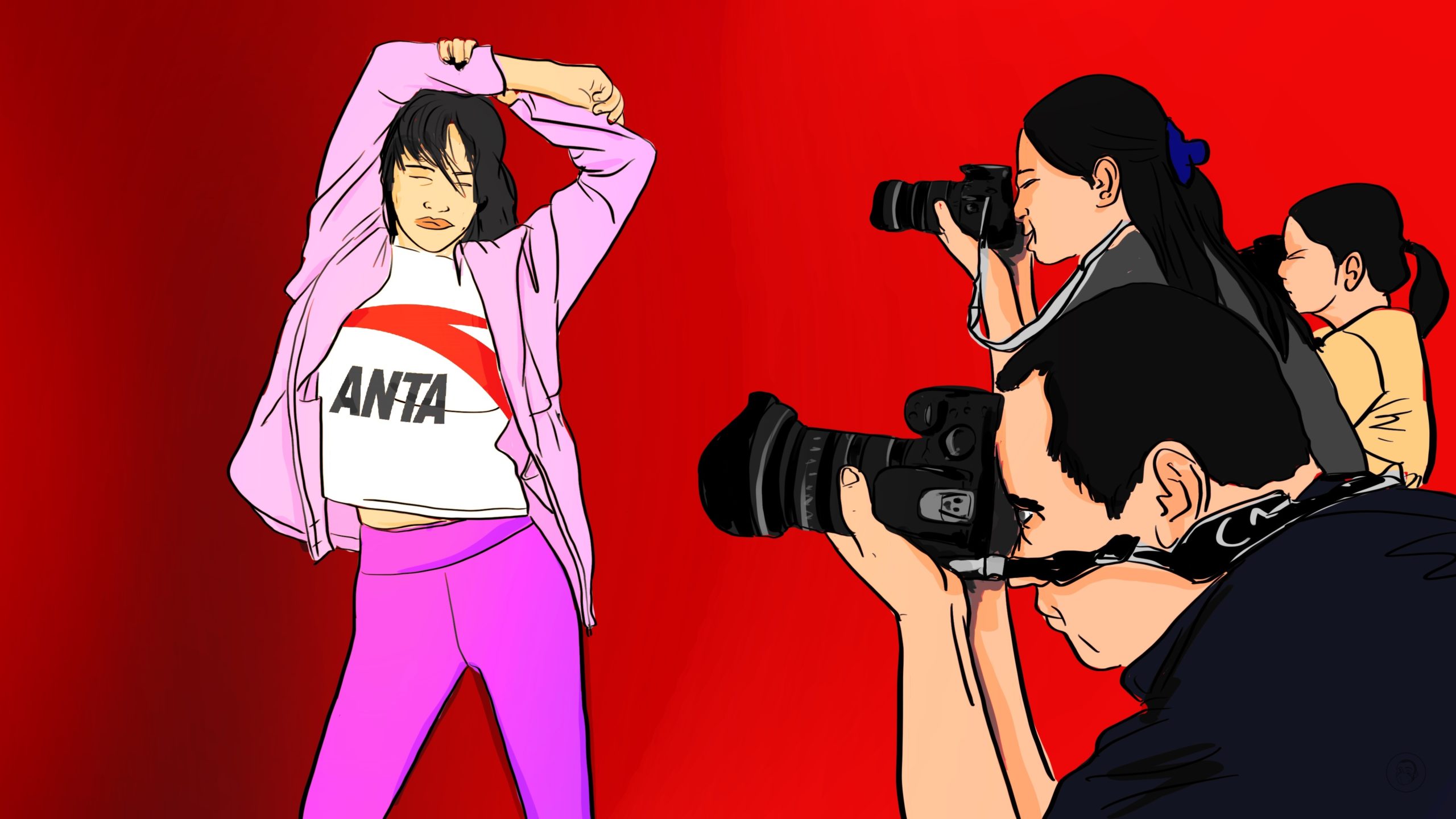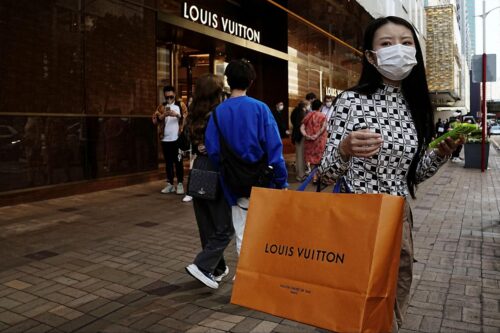Anta’s big marketing spend and sexy ads are paying off
Sports apparel giant Anta’s big marketing spend and sexy ads are paying off Anta has prioritized marketing over R&D, and it seems to be working for its attempts to become a “national brand.”

Chinese sports equipment manufacturer Anta 安踏 recently found itself in a type of “edge marketing” storm. Edge marketing (擦边营销 cā biān yíngxiāo, a phrase that means using attractive female models with suggestive or tight-fitting clothing to inspire impulsive buys among men) has become increasingly common in China, especially in the auto industry, but many do not approve of this “vulgar” tactic.
Last week, Anta launched a new series of women’s sports shoes. One promotional image was highly suggestive, and was immediately slammed on Chinese social media. Anta deleted the image from its social media accounts and apologized, but some said that this incident smacked of a lack of advertising professionalism, and did great damage to Anta’s image as a “national brand” (国潮), namely a brand that has something distinctively and uniquely Chinese about it. The topic was hotly debated on social media platform Weibo, and in just a few days it attracted 94 million views.
Vulgar or not, Anta has clearly decided to invest heavily in advertising, much more so than in R&D. Based on the company’s 2020 and 2021 financial reports, advertising spend amounted to 10% and 12.4% of total revenue, respectively, while R&D spend was just 2.5% and 2.3%. In 2021, Anta spent 6.11 billion yuan ($917.06 million) on advertising. In the process, Anta has cooperated with a series of athletes, including controversial Olympian Eileen Gu (Gǔ Àilíng 谷爱凌), and signed celebrity endorsements with a series of actors and singers.
In addition, Anta has been the official sports apparel partner of the Chinese Olympic Committee since 2009. The company also became the official sportswear uniform supplier to the International Olympic Committee (IOC) in 2019, and was the official sportswear partner of the 2022 Beijing Winter Olympic Games.
The context
All this is clearly working for Anta: In 2021, the company reported record-high revenues of 49.33 billion yuan ($7.39 billion), a year-on-year increase of 38.9%, and a compound annual growth rate of 28.2% over the last six years. Net profits were 10.98 billion yuan ($1.64 billion), a year-on-year increase of 20.1%. As of June 2, Anta’s market capitalization was $29.74 billion.
By comparison, the company’s closest domestic rivals, Li-Ning 李宁 and Xtep 特步, reported revenues for 2021 of 22.57 billion yuan ($3.38 billion) and 10.01 billion yuan ($1.50 billion), respectively, and as of June 2, their market capitalizations were $20.01 billion and $3.89 billion. Li-Ning’s ad spend in 2021 was 1.78 billion yuan (7.9% of total revenue), while Xtep’s ad spend was 437 million yuan (10.6% of total revenue).
But Anta still lags behind its global rivals in ad spend: In the fiscal year 2021, Nike blew well over $3 billion on advertising (7.7% of total revenue), while Adidas laid out more than $2.5 billion dollars (12% of total revenue). (The business of both Nike and Adidas is slowly receding in China, however: Adidas’ mainland China revenues, for example, dropped by 35% in the first quarter.) In 2021, Li-Ning and Xtep
Last year, China’s sportswear industry was resilient in the face of COVID: Total retail sales of sportswear amounted to 371.8 billion yuan ($55.74 billion), a year-on-year increase of 19.1%. Lockdowns and logistical delays may register a bigger hit in the industry this year, and the largest producers are currently sitting on a large backlog of stock.
But Anta is also well placed to benefit from the home fitness and camping crazes that have accompanied the lockdowns, as well as the 2022 Olympics. The outdoor sportswear category may well continue these trends this year.
The takeaway
Despite the recent controversy, Anta has shown what can be done with an aggressive marketing strategy, and it is ready to expand its domestic dominance on the global stage.






